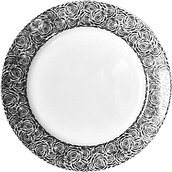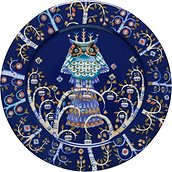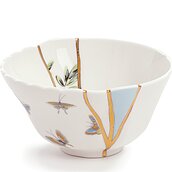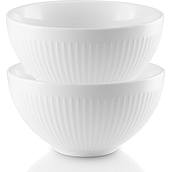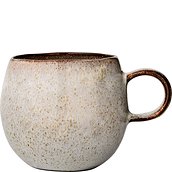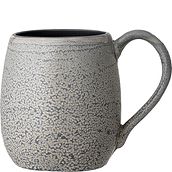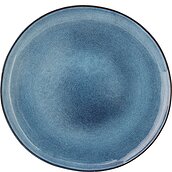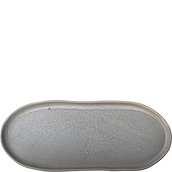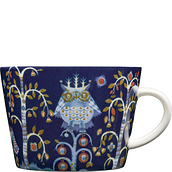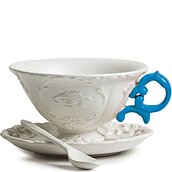Stoneware, faience, porcelain - a guide to the types of ceramics
Ancient Egyptians believed that the god Khnum made the first man out of clay on the potter's wheel. It is not surprising; making pottery is one of the greatest achievements in human history. That is why we have prepared a guide for you about the types of pottery, their properties and the differences between them. Stoneware, faience or porcelain will no longer be a secret for you!
A trip into the distant past
Ceramics
means burnt clay products. The first traces of ceramic objects date back to 13 thousand years B.C.! The name used today comes from ancient Greece and is derived from the word κέραμος (keramos - earth, clay), or more precisely from its derivative, keramikos. The history of ceramics is therefore really the history of human civilization, and it is no wonder that to this day, the forms of ceramics still relate to the culture and tell the history of the societies that create them, becoming witnesses of their times.
Ceramics appeared in the lands of our ancestors about 7.5 thousand years ago. With the development of technology, new applications for ceramics have emerged: it was used no longer just for food storage vessels or for funerals, but also for vases and tiles. When Marco Polo brought news of porcelain from his expedition, Europeans literally got a white fever: everyone tried to discover the secret of the finest and whitest ceramics the Old Continent had ever seen. This fascinating story is described in the Magazine: Porcelain. A secret strictly guarded.


Types of pottery
For thousands of years, ceramics have come a long way to reach the tables in the contemporary times. So we will call it delicate, porcelain cups, as well as massive, rough stoneware plates. What kind of ceramics do we use today? What are their properties and how do they differ from each other? The types of pottery you may have to deal with every day include:
- porcelain
- faience
- stoneware
- porcelite
- terracotta
Porcelain
Porcelain is made from a mixture of quartz, feldspar and the most important component - kaolin clay, named after the Gaoling hill in China, where the Middle Kingdom mined the clay to produce porcelain. Porcelain can be as thin as a sheet of paper and it can transmit light likewise. It is delicate and brittle, yet extremely durable and resistant to high temperatures. For this reason it is so expensive, but beautiful porcelain tableware is an investment for years! Porcelain plates and bowls are also the best choice for elegant dinners, celebrating important events or romantic dinners.
Faience
Although at first glance it looks like porcelain, it is hard not to resist the impression that it is its uglier brother. Faience is made from the same mixture of clay, but of a lower quality, hence the finished dishes are of the lower class. Unlike porcelain, it does not let light through, and it is thicker and more massive. It does not have the same properties either: even unglazed porcelain does not soak in water, unlike faience, which is therefore always covered with glaze. Glaze has one more job - to even out and improve the colour to make it look more like white porcelain.
Porcelite
At first glance, it successfully imitates porcelain just like the faience does, but it is a low quality product, massive and impervious to light. It has similar thermal properties, which is why it is used as a baking dish. Above all, however, porcelite is used in the bathroom - to make toilet bowls or washbasins.
Stoneware
It is made of clay, chamotte and quartz sand. Dishes made of stoneware are extremely acid-resistant, so they can be used for pickling. Due to its exceptional strength, it is often used to produce floor tiles. Dishes made of stoneware often resemble flat plates from centuries ago, which why lovers of rustic style eagerly reach for them. Some manufacturers still emphasize this effect by creating hand-made, irregular, unique ceramic mugs or plates, delighting with their austerity and at the same time bring a cosy ambience to the interior.

Dishes made of stoneware look homely and cosy, and in addition, they look beautifully accompanied by wooden accessories.
Types of porcelain
If you decide to go for porcelain tableware, you should know that there are different types of porcelain. The basic division is into hard and soft porcelain. Both are made of kaolin, quartz and feldspar, but the proportions are different.
Hard porcelain
Nowadays, the proportions used for hard porcelain are 40-60% kaolin, 20-30% quartz and 20-30% feldspar, and it is burnt at 1350°C-1460°C. Most of the porcelain produced in Europe is of this kind, so there is a good chance that most of the porcelain items you have at home are made from hard porcelain. Such porcelain is smooth, thin, durable and resistant to high temperatures. Only a few pigments are used to colour it, so it will not be decorated with multi-coloured ornaments.
Soft porcelain
Soft porcelain is made of kaolin, quartz and feldspar in the proportions as follows: 25–40%, 30–35%, 25–40%. It is burnt at a lower temperature than hard porcelain, so it can be richly decorated, because most of the underglaze pigments can withstand heat treatment at 1280°C-1320°C and the colours remain vivid for many years. Chinese porcelain is mostly soft porcelain. It is easy to recognize because it is extremely thin and delicate, yet durable. Against the light, it seems almost transparent. If you have soft porcelain cups at home, take care of them like a treasure - soft porcelain is the most precious and sophisticated material for making dishes. Drinking tea or coffee from such cups is also an extraordinary pleasure for the eyes!
Bone china
The most famous type of soft porcelain is bone china, invented by the English 200 years ago. Its production requires high technological standards and a special know-how, but the effect is worth it: bone china is considered to be the most beautiful type of porcelain, it is also the most expensive, which is why it is used to make tableware such as coffee cups or tea cups.
As the name suggests, bone china is a porcelain with a high bone ash content. Fortunately, more and more high quality porcelain is being made, which resembles bone, but it is produced without meat-and-bone meal - such porcelain can be found, among others, in the offer of Ćmielów company.
The surface of bone porcelain is actually completely glasslike, with no porosity and has the highest whiteness factor. It is distinguished by:
- highest whiteness
- gentle shine
- high transparency
as well as features that facilitate use:
- high durability and mechanical resistance
- dishwasher safe
- microwave ovens safe (except porcelain with golden decorations)
An interesting fact
Did you know that Poland is one of the largest producers of high quality porcelain in the world? The combined Polish Porcelain Factories Ćmielów and Chodzież are the largest producers of a high quality porcelain in Europe!

